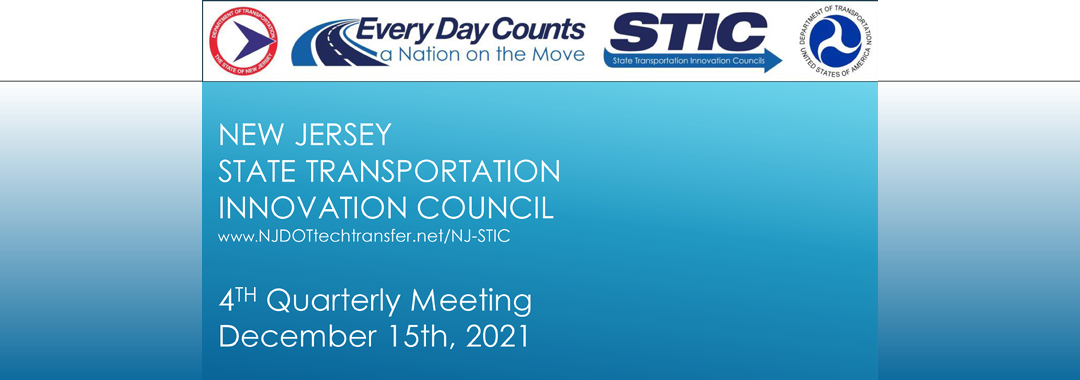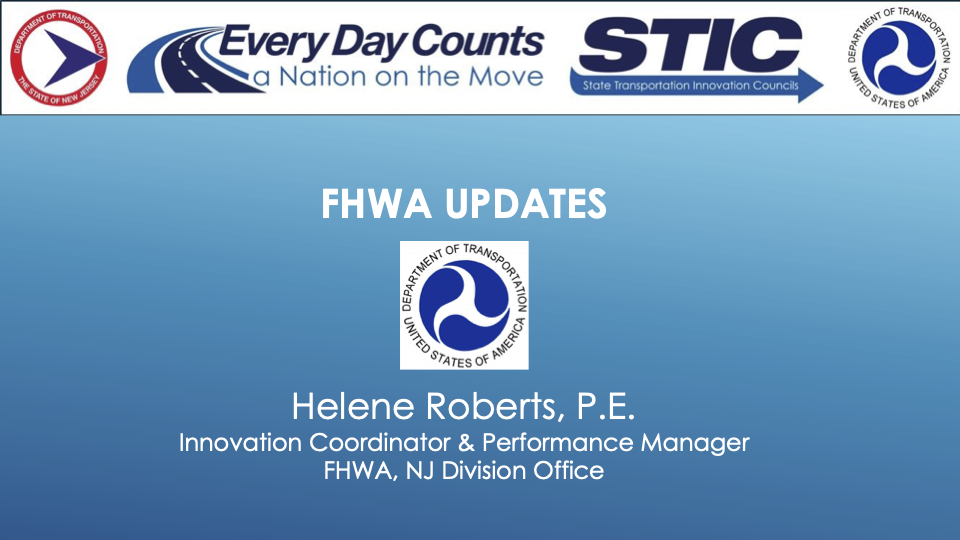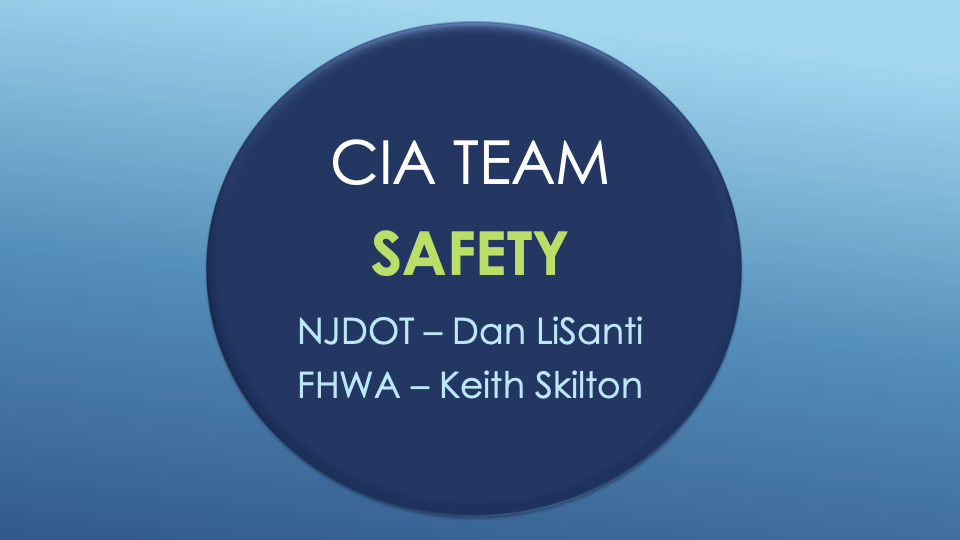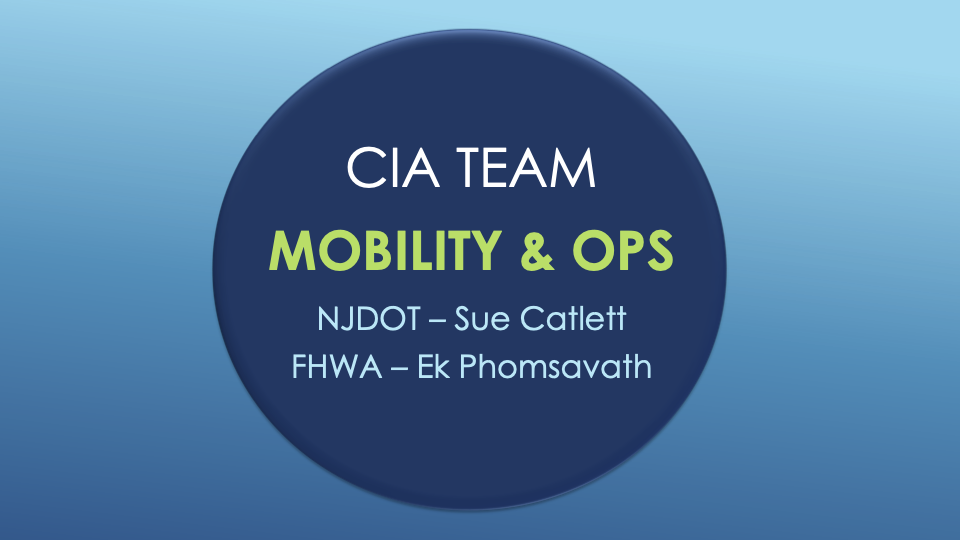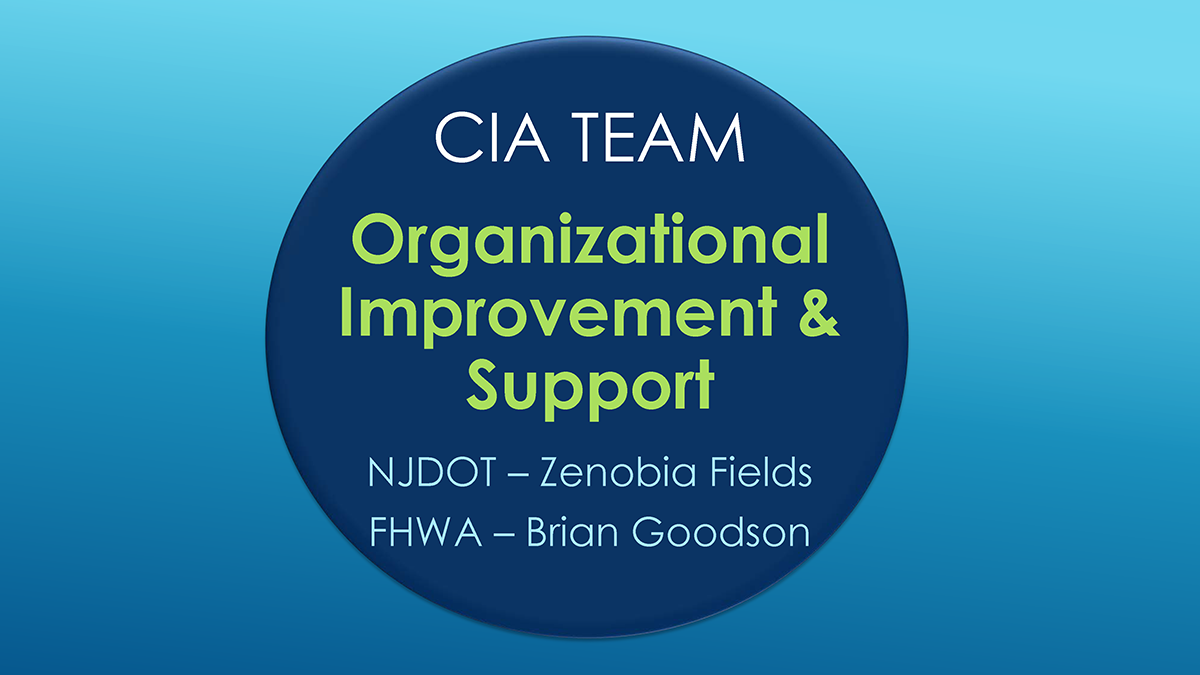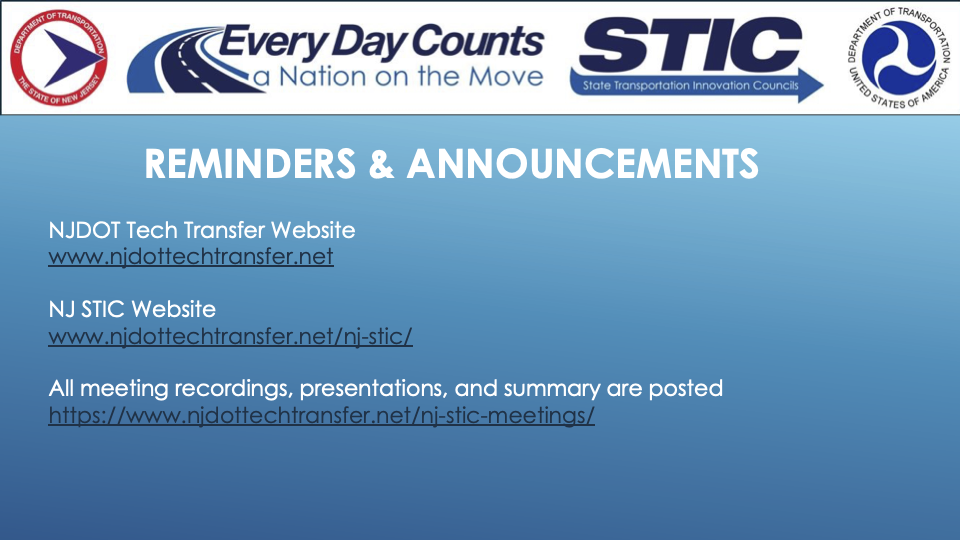The NJ State Transportation Innovation Council (NJ STIC) convened online for the 4th Quarter Meeting on December 15, 2021. The STIC Meeting Agenda had been distributed to the invitees prior to the meeting. Participants could use the chat feature to offer comments or ask questions of the speakers during the online meeting.
Amanda Gendek, Manager of the NJDOT Bureau of Research greeted the meeting participants, followed by Asst. Commissioner Michael Russo who provided the Welcome and Opening Remarks.
FHWA EDC Innovation. Helene Roberts, Innovation Coordinator and Performance Manager for the FHWA NJ Office, reported that the TOPS EDC-6 initiative team had been very active. New Jersey is a leader in Targeted Overlay Pavement Solutions (TOPS) for asphalt solutions. The TOPS session at the County Engineers Fall Forum included the initiative team as well as other speakers who provided New Jersey-specific information to the municipal and county engineers. The TOPS working group met on October 7, 2021 and had input from Monmouth County and Princeton.
Ms. Roberts noted that the Let’s Go Workshop pilot was held at the end of September with the Digital Project Delivery and Strategic Workforce Development initiative teams. She announced that New Jersey will be a featured state at the next National STIC meeting with discussion of the new STIC Communications Plan, and possibly highlighting the use of interactive STIC meetings early in the pandemic, and other topics. She asked that attendees contact Ms. Gendek if they have other suggestions for topics that could be highlighted. She reminded CIA leads that the next progress report is due at the end of January.
Core Innovation Area (CIA) Updates. The meeting continued with presentations from Core Innovative Area (CIA) leaders who provided updates of the status of EDC initiatives on the topics of Safety, Infrastructure Preservation, Mobility and Operations, and Organizational Improvement and Support
Featured Presentations. Kevin Becica, PE, PP, CME, Camden County Engineer described work on Targeted Overlay Pavement Systems Projects Using BRIC and SMA. Ms. Becica provided Westfield Avenue Phases I and II as case examples for the use of Binder Rich Intermediate Course (BRIC) and Stone Matrix Asphalt (SMA). The county road system comprises predominantly older concrete roads, with some asphalt overlay surfaces, and asphalt pavements in the southern section of the county. When the older concrete pavements fail at the longitudinal and transverse joints, the county is using overlay of BRIC and SMA to repair roads rather than use full concrete slab replacement which is expensive. The county uses NJDOT standard specifications for these materials. Some of the benefits of BRIC include a longer life than standard asphalt, a smoother surface, a surface that supports pavement markings so that they remain durable and visible, and a uniform look. Challenges to use of BRIC include higher costs due to the need to shut down regular asphalt production at a plant in order to produce this specialty material. Although utility companies are required to repave after digging up a road, they will replace the material with standard asphalt. Ms. Becica considers that the benefits outweigh the detriments and notes that local officials need to understand the arguments for using these materials. She is looking forward to the next project, possibly on Kings Highway. For more details on Camden County’s use of BRIC and SMA, see Ms. Becica’s presentation.
Sue Catlett, Project Manager in NJDOT’s Mobility Research Group provided an update on the Weather Savvy Roads project, an Accelerated Innovation Deployment Grant-funded project. The project has expanded to 24 equipped vehicles. She discussed the instrumentation process including set-up of the cameras and sensors and other equipment, and the web interface which includes the virtual video wall, the map, the camera view, and ambient air and road temperatures. NJDOT is comparing the value of mobile and fixed RWIS, and testing FirstNet signal strength compared with commercial cellular strength on state roads. The Weather Responsive Management System can also assist in traffic incident management by providing video of an incident scene that can help ensure that individuals in the field receive the appropriate support and get the road back open more quickly. NJDOT is continuing to work on improving the capacity of the video management system, acquiring additional instrumentation, and improving hardware maintenance and driver awareness and understanding of the system. This project won the ITS-NJ 2021 Outstanding Project Award.
Amanda Gendek introduced the 2021 Build A Better Mousetrap Competition Video. The video features the state and local agency winners for 2021 and describes the competition. As highlighted in the video, the next round of submissions of implemented ideas is due on May 1, 2022 for both state and local agency agencies. The Build a Better Mousetrap page on the Technology Transfer website features the competition video as well as the innovations recognized in past years of the competition. Application for the next round can be found here.
Ms. Gendek also encouraged attendees to contact her if there are innovations at NJDOT or at local agencies that could be advanced through a video. The Bureau of Research’s Technology Transfer program has the contractor and a funding mechanism to produce case study videos highlighting noteworthy innovations.
Reminders and Updates.
Ms. Gendek closed the meeting with information and reminders on the online location of several resources that highlight the NJ STIC and other innovation topics funded through research and technology transfer activities, including:
- NJDOT Tech Transfer Website - https://www.njdottechtransfer.net/
- NJ STIC Website - https://www.njdottechtransfer.net/nj-stic/
- NJ STIC Meetings – https://www.njdottechtransfer.net/nj-stic-meetings/
A recording of the NJ STIC December Meeting can be here.
Meeting Presentations can be found in its entirety here and in the sections below.
NJ STIC December 2021 Meeting Recording

